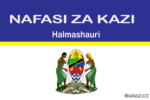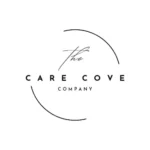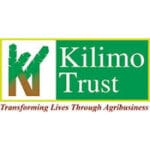AboutUnited African University of Tanzania (UAUT)
THE UNITED AFRICAN UNIVERSITY OF TANZANIA(UAUT) is a private Institution of Higher Learning founded by The Korea Church Mission (KCM) Registered Trustees, with the objective of alleviating poverty and promoting growth through raising Tanzanian Christian leaders who are equipped with excellence in wisdom, knowledge and Christian virtues. The responsibility of the day to day running of UAUT is vested upon the University Council with the Vice Chancellor as the main link between the Board of Trustees and University Council.
UAUT is the first united university established in Africa. The campus is situated in Kigamboni Temeke district in Dar es Salaam,the economic capital of Tanzania in central eastern Africa. The university is established on 300 acres of property approved by Korea Church Mission, branch of Global Mission Society in Tanzania.
The founding purpose of UAUT is to raise leaders of Tanzania with Christian virtues, wisdom and knowledge. We seek to train servants who can lead Tanzania and Africa with God’s vision, faith and passion. And we will foster core Christian individuals who can perform the grand mission of building Tanzania by being the salt and light in Africa and the world.
UAUT will complete a model of coorperation between education research and industry through joining hands with businesses. The university also seeks to become a bridge between Republic of Korea and the Tanzanian government through cultural and technological exchanges. And UAUT will contribute to the development of ecofriendly economic growth by putting more focus on the conservation of environment.
UAUT will bring together young students from Africa and other part of the world with the vision of changing Africa and the world. The professors and staff of UAUT are firmly determined to see this ultimate goal is achieved.
Learning Environment

The “learning environment” that UAUT provides for students traditionally has been thought about in two dominant forms: the physical, and the socio-cultural. The physical environment includes things like: computers, chairs arranged in a circle or around a square table, provision of residential care, access to library and other information resources, access to laboratory or other discipline-specialist environments, and so forth.
Currently, the “learning environment” that we provide for our students at UAUT takes two different dominant forms: the physical and the virtual. Both allow us space to explore the socio-cultural. The virtual environment which supplements our physical environment offers us an opportunity to work outside the restrictions of time and place. We do not need to stay in our chairs to continue the discussion, we can build and reflect and return to the topic in threaded discussions. We can explore details and processes over and over again, drilling down into images, listening again to key explanations, revisiting challenging concepts. We can also access the library online collections at any time from our bedrooms, or an internet cafe.
The socio-cultural environment, and what we can do to influence it, is less straightforward to get our head around – at least at first glance. In a paper entitled Cognitive Apprenticeship: making thinking visible – the subtitle says it all – the essence of much good teaching practice, and its role in shaping an appropriate learning environment, is summed up or represented using just a handful of keywords. These have served me well in nearly ten years of using this framework with colleagues seeking to improve how to deliver on the expectations that they experience as teachers in higher education. These keywords relate both to actions taken by the teacher: modelling; coaching; scaffolding (and fading); and actions requested of the student: articulating, reflecting and exploring. I’ve inserted the word fading together with the word scaffolding because it helps to signify the dynamics that underpin good teaching. Good teachers will sequence tasks and move the goal posts in such a fashion that students not only become increasing able, but also increasingly independent learners.
In addition to modelling, coaching, scaffolding (and fading), Blending learning is a new art that underpins good teaching amongst teachers who use both physical and virtual learning environments (VLE). The art of blending is to make informed and considered choices as to the activities, tasks and tools you use to structure pathways of learning. Finding an appropriate blend or design is often a process of iterative trial and error informed by reflective practice.
Making informed choices in this way amounts to a process of practice-based learning, involving the exercise of professional judgement underpinned by an educational rationale. The Cognitive Apprenticeship framework is one tool that can be used to help clarify this rationale and hence help to hone the capacity to make appropriate judgements, no matter what combination of physical, virtual or blended setting you work in.
Exploring the next generation digital learning environments
It is not sufficient to simply make a bunch of small web-hosted things and claim we have ‘implemented’ the Next Generation Digital Learning Environments (NGDLE). We must be able to coherently search, find, re-construct and re-combine those ‘small pieces’ in a way that allows teaching and learning to happen. To do this, each of the learning application and content providers must master detailed interoperability standards to allow us ‘mash up’ and bring those distributed and disparate elements back together. While there has been much said about the ultimate shape and structure of the NGDLE, and there are many current and emerging interoperability standards, there is little effort to build and train providers with usable technology that will empower thousands or hundreds of thousands of people to create and share applications and content that will populate the new learning ecosystem.
In effect, we need to build the educational equivalent of the software eg. Apple App Store and android app. Except that it needs to be open and extensible and not depend on a single vendor intent on maximizing shareholder value. UAUT has a 100 per cent open source production-ready application and content hosting system that is simple enough to use to allow interoperable and pluggable learning applications or learning content to be built, hosted, deployed and shared by individuals or various-sized organizations.
An interactive online learning environment for students
The new interactive online learning environment for our students enables them to achieve the required level of precision, appropriateness and consistent control over the use of complex online learning resources through independent learning. It combines the following essential features:
- Training in varied competencies at wide-ranging levels according to the curriculum requirements
- Constant automatic monitoring and immediate assessment of the learner’s progress
- Immediately generated feedback
- Immediate availability of individually designed teaching materials targeting the individual needs of the learner
- The project makes use of varieties software’s to help delivery of virtual learning and assessment.
Research and Collaboration
Our core research & collaboration strategies set out how we propose to build upon UAUT’s existing strengths and share the knowledge we create with the wider world. They are also informed, as relevant, by our new overarching priorities. Each strategy is expressed as a series of commitments.
1. Research
1.1 Research commitment 1
To maintain originality, significance and rigor in research within a framework of the highest standards of infrastructure, training, and integrity.
UAUT believes that deciding what to research on is a matter for the individual researcher or research group. This belief reflects the value we accord to the principle of academic freedom, enabling the pursuit of academic enquiry subject to the norms and standards of scholarly undertaking, without interference or penalty. This freedom to seek out truth and understanding, whether through theoretical or empirical means, will ensure that our strong core disciplines flourish.
The maintenance of a sustaining research environment is crucial to the University’s research standing. We will enhance the infrastructure which supports research at the highest level, including libraries, laboratories, museums, and information systems.
We will provide appropriate training in research methods and conduct at all career stages from research student to principal investigator.
1.2 Research commitment 2
To empower the creative autonomy of individuals to address fundamental questions of real significance and applied questions with potential to change the world.
The unparalleled breadth and depth of UAUT’s expertise enables us to lead the international research agenda across the spectrum of the sciences, the social sciences, and the humanities. Our commitment to the range and depth of our disciplinary work is reflected in sustenance of both applied research and that which may not necessarily yield immediate impact.
Increased engagement with research councils, government departments, and industrial collaborators, will enhance our capacity to set research questions in the context of key international themes. Development of translational activities, of international consultancy and of spin-out companies, will ensure that UAUT’s research endeavors and expertise continue to shape the world.
1.3 Research commitment 3
To maintain and develop resources, and invest in subject areas of long-term worth.
The UAUT plays a key role in preserving subject areas which may be vulnerable nationally but have not been identified as a priority for government support. This curatorial responsibility encompasses maintaining and developing resources for subsequent generations and training the research leaders and teachers of the future.
2. Collaboration with UAUT
2.1 Overview
UAUT is a centre of expertise from the divinity, arts and humanities to engineering, life sciences and information technology. Our students and faculties benefit from working with community projects, and, we hope, the communities of UAUT will also find the relationship beneficial. If you feel your group or project could usefully explore how such a partnership could be set up; whether it be mentoring and advice, volunteering and participation, data-sharing and expertise, or even a business venture, then it may be worth getting in touch.
2.2. International collaboration crucial for scientific research
Collaboration is increasing for a variety of reasons. Enabling factors such as advances in computer engineering and information & communication technology and cheaper travel have played a part, but the primary driver of most collaboration is individual scientists. In seeking to work with the best of their peers and to gain access to complementary resources, equipment and knowledge, researchers fundamentally enhance the quality and improve the efficiency of their work.
Today collaboration has never been more important. With human society facing a number of wide-ranging and interlinked ‘global challenges’ such as climate change, food security, energy security and infectious disease, international scientific collaboration is essential if we are to have any chance of addressing the causes, or dealing with the impacts, of these problems. Case studies demonstrate that we can examine the achievements of some of the efforts to tackle these challenges, discuss problems they have faced, and highlight important lessons their experience has to offer similar initiatives.
Through case studies, we can derive five major recommendations about a need for scholarly collaborative initiatives:
- Support for international science should be maintained and strengthened
- Internationally collaborative science should be encouraged, supported and facilitated
- National and international strategies for science are required to address global challenges
- International capacity building is crucial to ensure that the impacts of scientific research are shared globally
- Better indicators are required in order to properly evaluate global science











